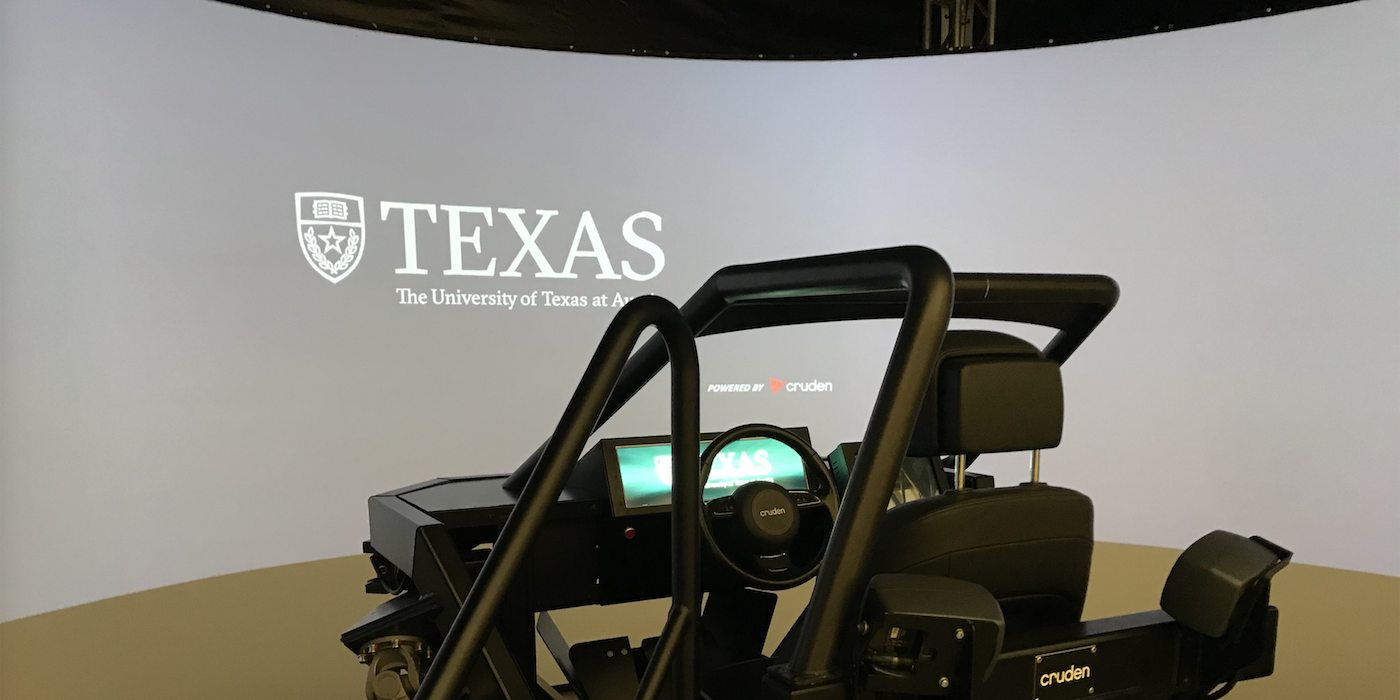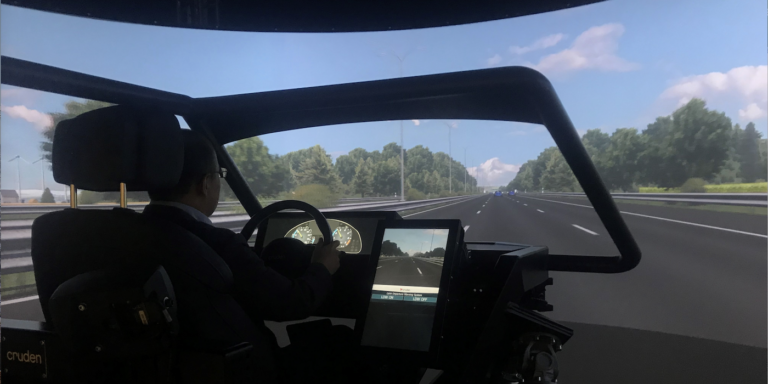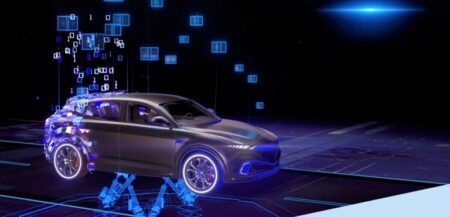Cruden has completed the installation of an automotive driver-in-the-loop (DIL) simulator at the University of Texas at Austin (UT-Austin), one of North America’s best regarded research institutions. The university’s department of mechanical engineering will use the simulator – a Cruden AS1 motion-based system – to add human driver input to its hardware-in-the-loop (HIL) test set-up, for research into the performance of autonomous vehicle control systems. With an advanced specification and system flexibility to integrate any number of variables, UT-Austin expects to be able to use the system to forge closer ties with more automotive OEMs and Tier 1 suppliers on future R&D projects.
UT-Austin’s requirement for an automotive simulator that combined HIL and DIL systems meant specifying a bespoke unit capable of rendering a variety of realistic driving environments. To help achieve this realism, the simulator integrates with UT-Austin’s existing dSpace Scalexio modular real-time hardware simulation system and the dSpace ASM vehicle and traffic model.
The system is prepared for multi-agent simulations to assess traffic scenarios with multiple ego vehicles, including their sophisticated vehicle dynamics – communicating with each other for V2V applications, for example. According to Cruden, this combination of multi-agent simulation and a DIL simulator is an industry first that has potential in subjective and objective scenario examinations and for research into future mobility programs.

“The system affords us the luxury of testing and validating autonomous vehicle control systems exclusively or as part of a wider scope of research where human behaviors and interactions with these systems are repeatedly monitored and observed in real time,” stated Professor Junmin Wang from UT-Austin, who played a key role in defining the specifications of the university’s individual simulator. “The flexibility and ease at which the hardware and software works together enables us to conduct repeatable and measurable research on accurate representations of the vehicles, the prevailing driving environment and numerous scenarios in which a driver may encounter.”
With this technology, UT-Austin becomes one of just a few universities in the USA to have a dynamic motion-based system such as this, which in addition to being used for research into autonomous vehicle technology, will give students the knowledge and expertise in this area that employers are already demanding. The simulator will also be used for non-engineering studies, such as psychology and human behavioral patterns in driving, or in the medical field for testing the side-effects of driver impairment, all in a safe and controlled environment.





